During the past year, the beguiling urban designer Thomas Heatherwick has, along with just about everyone else, spent many hours walking alone in empty streets, wondering what happens next. One of the thoughts that has bounced around in his head on those walks has been this: “Many people are realising that they may hardly have to go anywhere ever again.” A consequence of that realisation – the conclusion of the enforced mass experiment of working and socialising and shopping from your kitchen table – will, he believes, cause “a lot of hard-nosed businessmen” to confront a question that has been fundamental to his own thinking ever since he set up in practice 27 years ago. “What might make people want to come to this place?”
Heatherwick is talking to me from his studio in King’s Cross, London, an area that he is helping to reimagine on a grand scale: his Coal Drops Yard development, an upscale shopping and café complex landscaped and wow-factored from blackened-brick Victorian warehousing, opened in 2018; nearby his co-design for the new Google UK campus, a “landscraper” with a rooftop park, is slowly taking shape. The studio wall behind him is alive with ferns and trailing plants that half-cover schoolroom maps of the world – a potted version of the cascades of foliage and trees that are integrated into many of his city centre designs, including his ill-fated Garden Bridge across the Thames.
Heatherwick has so long been thought of as the elfin prodigy of British design, that you have to remind yourself that he is now 51, with a global practice that employs 200 people. Visitors to his studio discover a place that falls somewhere between materials laboratory and medieval workshop, full of animated industry and cabinets of curiosities. During the pandemic he has often been in it pretty much alone.
For an instinctive collaborator, that distancing was novel for a while, he says – “we all fed off the nourishment of having worked together for quite a long time” – but then not so much. “You realise you really need the humour, the accidents of human interaction.”
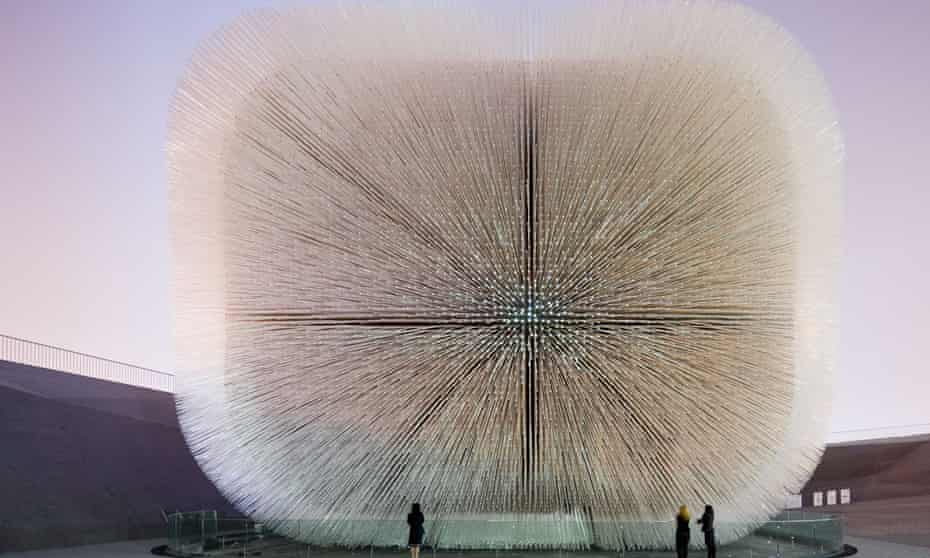
One of his distractions in that period has been work on a book he’s promised to Penguin that pins down some of his design philosophy. His London walks have let him once again count the ways that he dislikes much postwar building – his original vocation, he says a couple of times, was formed as a child when he looked around at “sterile, inhuman” public places and wondered how they ever got built. The mantra of that modernism was that “form follows function”. “Well, I’m really passionate about function,” he says, “but for me there was a function that was always being missed, which was emotion. The bit that I’m interested in is, where in the world around us gets love? What I mean by that is, if you walk into an art gallery, surprise, surprise, it’s really artistic.” Why not, he wonders, build that same artistic surprise into a waste-recycling centre?
That desire to spread love to unlikely places produces frequent “roll-our-eyes moments” in the studio, he says, when his team realises once again that in first sketches of a new project, “there’s a diagram with a heart, the place that brings people together”.
In the past, developers and planners, builders of office blocks and shopping malls, could dismiss such sentiment with talk of rigour and efficiencies. The fact was that employees had no choice but to be in the monolithic office from nine until five. “Employers had them in a headlock,” Heatherwick says. But what if you are only at work for two days, or if you can choose? How do you make people want to come together then?
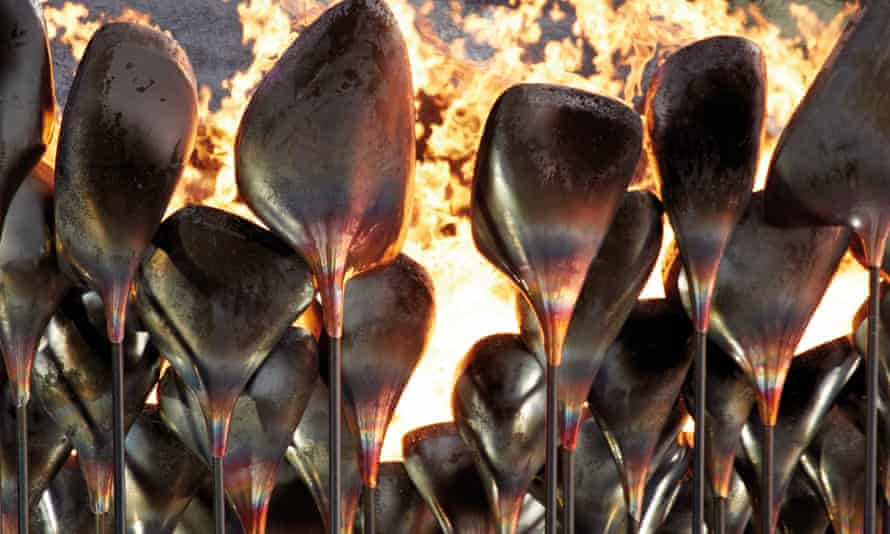
Heatherwick’s answer to that question is that you will have to create spaces built with a care that makes people feel better, more social, for being in them. When I ask how that metric might be calculated, he talks about the footfall in the “people’s palaces” that the Victorians created, and the thrills of the Moscow underground railway. “You see these stations that are 80 years old, and they’ve got stunning tiling. They’ve got chandeliers! You think of the extra initial cost of those tiles, and light fittings. And then you say, every day, maybe 200,000 people see them. Times 365 times 80: that’s value, the emotion that has given people.” He likes the idea that a properly developed society is where “rich people all take public transport by choice”.
Over the years, like all successful showmen, Heatherwick has distilled his original thinking into a few parables. One of his favourites has been to ask an audience to consider a particular question of scale. Think of the intricacies and care that goes into making an earring, he says. And then think of an office block. “Why do we spend so much more time making the one beautiful and not the other?” Every time he asks this, you are reminded that Heatherwick’s mother, Stefany Tomalin (granddaughter of the owner of the fashion house Jaeger) is a jewellery designer who had a bead shop on the Portobello Road. And once you know that fact, it is hard not to imagine Heatherwick as a child, spending hours peering at that closeup world, wondering how he might better inhabit it.
The imagining is the easy bit, he insists; the architecture bookshelves are full of brilliant ingenuities that never got made. The hard part is persuading the right people to buy into your vision. Heatherwick proved himself early on a great persuader; he would give out ice lollies at the end of any presentations he made that, once licked clean, would reveal his contact details on the stick. His collaborator on the Google HQ, the Danish architect Bjarke Ingels, has compared Heatherwick’s skills in the boardroom to those of a hypnotist.
His break came while he was at the Royal College of Art, studying furniture design. He buttonholed Sir Terence Conran on the stairs after a guest lecture, and persuaded the Habitat founder to allow him to build his graduate-thesis design at Conran’s manor house in Berkshire. For some weeks, Heatherwick lived in Conran’s home and made an 18ft-high gazebo out of strips of laminated birch. Conran, who became a friend and mentor, floated the idea that Heatherwick was “the Leonardo da Vinci of our times”, gave him some contacts, and advised him to set up his own studio, concentrating on a seductive space between design and architecture, making and mending.
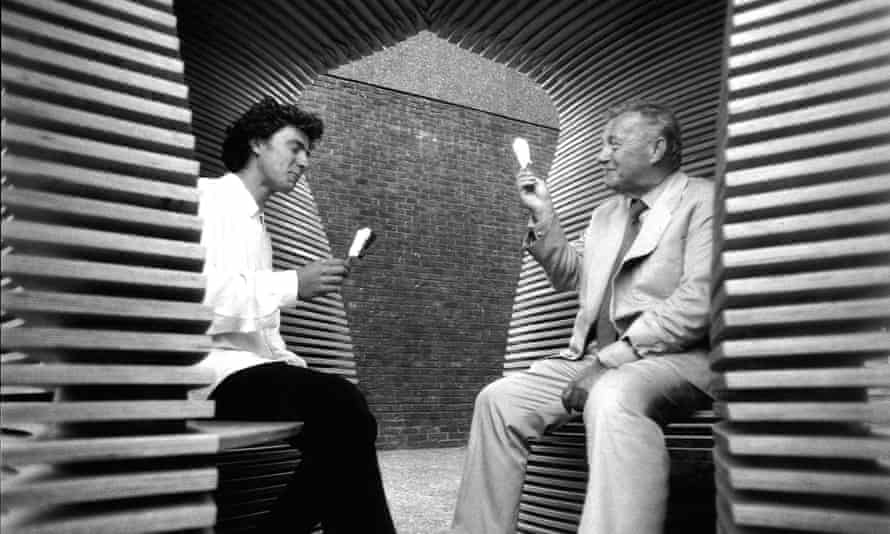
To begin with, his efforts to bring “materiality and soulfulness” to the built environment were on a small scale. But with a series of quite mesmerising, discrete projects he established himself as the man most likely to perform those conjuring acts most desired by CEOs, pushing the envelope and thinking outside the box. There is a standing-ovation Ted Talk in which Heatherwick, mop-haired and self-effacing in a smock-like suit, explained to his audience the brilliant virtues of four of his studio’s key projects: his bridge at Paddington Basin that curls back on itself like a geometric caterpillar; the separate petal-like torch-holders of the 2012 Olympic cauldron that rose in a magical uniting flame; his redesigned London Routemaster bus; and, above all, his remarkable UK Pavilion for Expo 2010, in Shanghai, a “seed cathedral” formed from 60,000 fibre-optic rods that waved in the wind like a wheatfield. Noting that “we expect buildings neither to be hairy nor in motion” Rowan Moore, the Observer’s architecture critic, found the latter construction “breathtaking”.
In the past decade, as a result of these singular calling cards, and somewhat to his surprise, Heatherwick’s studio has been given multiple opportunities to answer his earring and tower block question for real; to move from the micro to the macro. His goal with all of these projects is sustainability, over a long time frame. “You are generating carbon in the creation of any building,” he says. “Don’t add to that by making things that will need to be knocked down. We waste billions of tonnes of concrete and steel and glass by demolishing buildings that should never ever have been allowed to go up in the first place.”
Like all self-styled blue-sky thinkers, Heatherwick has experienced several thuds to earth. As he has discovered, politics and committees rarely intervene in the design of earrings; landmark city projects, more so. Cost – which spiralled from a promised £60m to £200m or more – finally killed the Garden Bridge; similar escalation eventually made a futuristic biomass power station in Teesside unworkable. Heatherwick’s controversial Vessel structure in New York, his enormous jewel-like “staircase to nowhere” at the centre of the $25bn Hudson Yards commercial redevelopment, did get built (and, at an eventual price of $200m, is arguably the most expensive sculpture ever made).
Heatherwick was bruised in particular by the Garden Bridge. “It wasn’t my idea, but I thought it was a great idea,” he says. He made “344 one-and-a-half-hour presentations”, advocating for it. (“I believe Thomas has come straight from the woods,” Joanna Lumley, originator of the bridge idea, once suggested. “He might be the Green Man. He has an extraordinary affinity with nature.”)
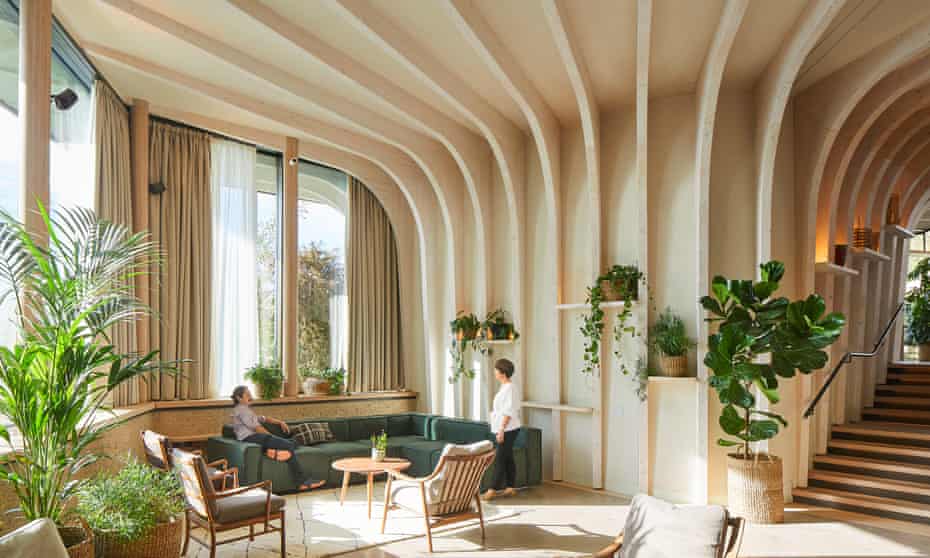
By the time the plug was finally pulled on the project by London mayor Sadiq Khan, the £60m pledged public funds had become a byword for his predecessor Boris Johnson’s ego, profligacy and lack of transparency in procurement. As the Garden Bridge has come to be viewed as exhibit A in the arguments against Johnson’s cronyism, has Heatherwick felt tarnished by association?
“There’s a cannibalistic side within the built-environment world that attacks anyone who is trying to do something in this space,” he says. “Words like the one you used [he doesn’t want the expression “cronyism” to pass his lips] get thrown about. There are lots of talented designers and architects in Britain, who go all around the rest of the world doing projects. It’s very normal in the world to speak to whoever is making the decisions, to lobby for things. But I think, here, lobbying has got a funny name.”
His most spectacular lobbying triumph was with Stephen Ross, 80, the billionaire property developer and the owner of the Miami Dolphins, who paid for Vessel. Tragically, the monstrous staircase structure, optimistically imagined as New York’s Eiffel Tower, is currently closed after three people took their own lives by jumping from it in separate incidents. “It’s very, very sad and no one could have predicted what happened,” Heatherwick says. “But we obviously absolutely supported closing the project down while we work out what changes can get made.
”
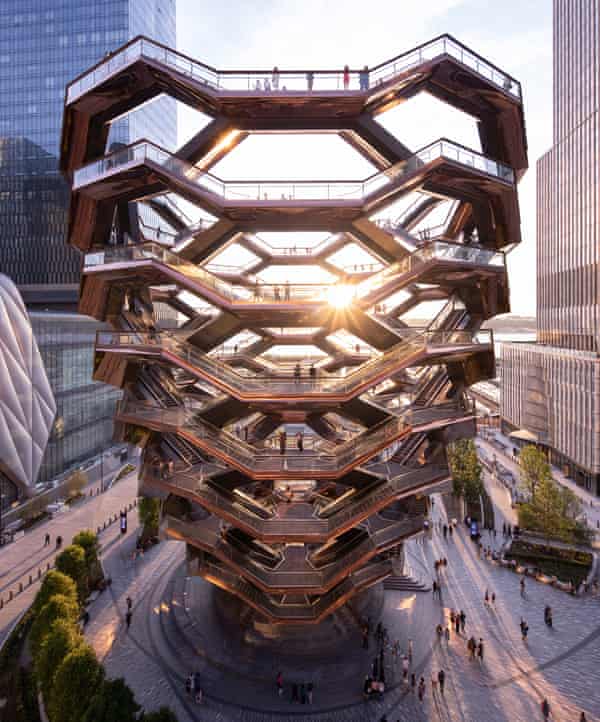
If Heatherwick went into the pandemic with some of these clouds hanging over him, it seems likely that he will emerge from it with his reputation for innovation partly restored. Part of this has to do with a sort of undimmable idealism that he projects, and part with the fact that at least two of his most significant global projects seem to match exactly the demands of the post-pandemic moment.
His Pier 55 development in New York, an undulating public park and amphitheatre set on bold pylons in the Hudson River, got mired in similar arguments to the Garden Bridge and ground to a halt. “But then the mayor of New York and the authorities got together and realised they were going to lose this whole philanthropic project,” Heatherwick says (the bulk of it was funded by new media billionaire Barry Diller and his wife, designer Diane von Fürstenberg.) The opening of what is now known as Little Island will coincide with the liberation from lockdown, allowing people to safely gather outdoors.
Meanwhile, his 1,000 Trees development in Shanghai, a high-rise garden village built like a rolling hillside and 10 years in the making, is also nearing completion. The Hanging Gardens of Babylon theme emphasises Heatherwick’s insistence that in a lower pollution, electric-car future, “outdoors must once again be a place.”
Landscaping, he says, “can no longer be treated as garnish, like a sprig of parsley in a serving suggestion”. The ventilation requirements of the pandemic have made people realise, he says, “the insane degree to which air conditioning has been taken up in the UK – where most months of the year it’s fine to have windows that open; instead, we seal ourselves in.” (Heatherwick’s Routemaster bus was widely criticised for its lack of upper-deck ventilation – in fact the opening windows in the original design had been vetoed by Transport for London. It took him six years to win the argument to get them retrofitted.)
The best recent example of his fresh-air thinking is his contribution to the Maggie’s Centre project, hidden under plants and trees within the campus of St James’s University Hospital in Leeds. The spruce timber and lime plaster construction is a support centre for cancer patients, part of the legacy of Maggie Keswick Jencks. As well as a place where they can access advice and therapy, patients and visitors “are encouraged to participate in the care of the 23,000 bulbs and 17,000 plants on site”. The building, set among the impersonal towering blocks of a modern hospital, makes the argument, Heatherwick says, “that hospital architecture should be about wellness” as a counterpoint to that sense of a “sickness factory, where even children smell fear in the space when they walk in”. He hopes that other similarly ambitious healthcare proposals will find the light of day.
I wonder, if he were put in charge of “building back better” after the pandemic, what else would be top of his list of principles.
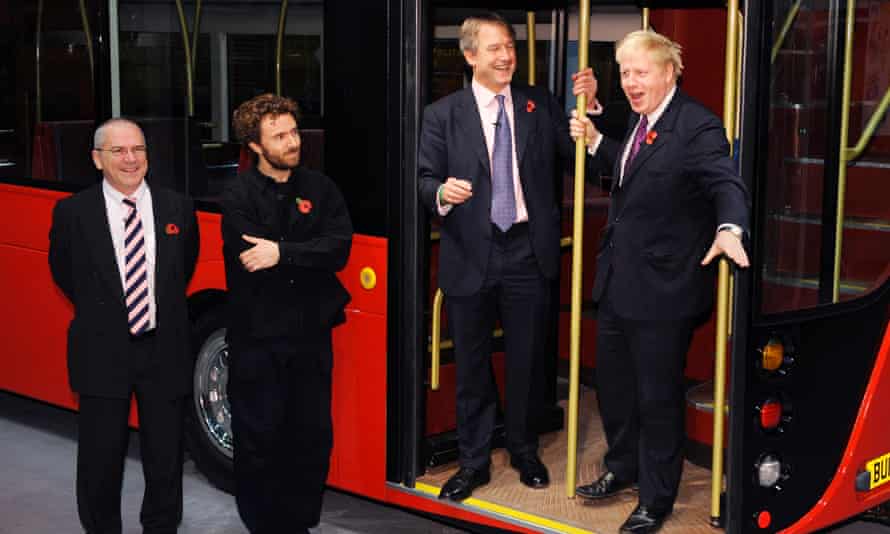
He suggests first we need to be more humble about learning from the past. “Whenever you go to a new city, and someone says, ‘Well, where would you like to go?’ you’re very unlikely to say, ‘I’ll go to the new office district,’” he says. “You go to the old parts of town that have not been destroyed.
City planners, he suggests, spend too much time talking about how high buildings are and what the tops of them will look like, “when nearly everyone’s experience of those buildings will be the 8m from pavement level”. He has been strongly influenced by Jane Jacobs, pioneering author of The Death and Life of Great American Cities, who campaigned for variety and human scale at street level. Walking the empty city, Heatherwick says, everyone feels her conclusions instinctively. “The more doors you can see, the more alive a place is. The fewer doors, the more scary or alienating it is.” We have had enough of “wide faceless blocks with boring glass lobbies, and pointless artworks above reception as a gesture towards culture”.
He finds himself looking more and more at how the Victorians and the Georgians built, in order to replicate not the style, but the understanding of density. “I can understand the thrill of wanting to ‘reinvent the idea of the street’ after the war,” he says. “But we have to acknowledge that failed.” Some cities, Madrid for example, have been using the lockdown to address that fact, he believes, reclaiming public spaces with pedestrianisation. In London and the UK he doesn’t yet sense that “wholeheartedness” in response to the pandemic. Not enough people, he says, “are really thinking of how to cherish the city as a new kind of space, as a room, as a meaningful gathering place – but that is going to be needed to bring people back.”








